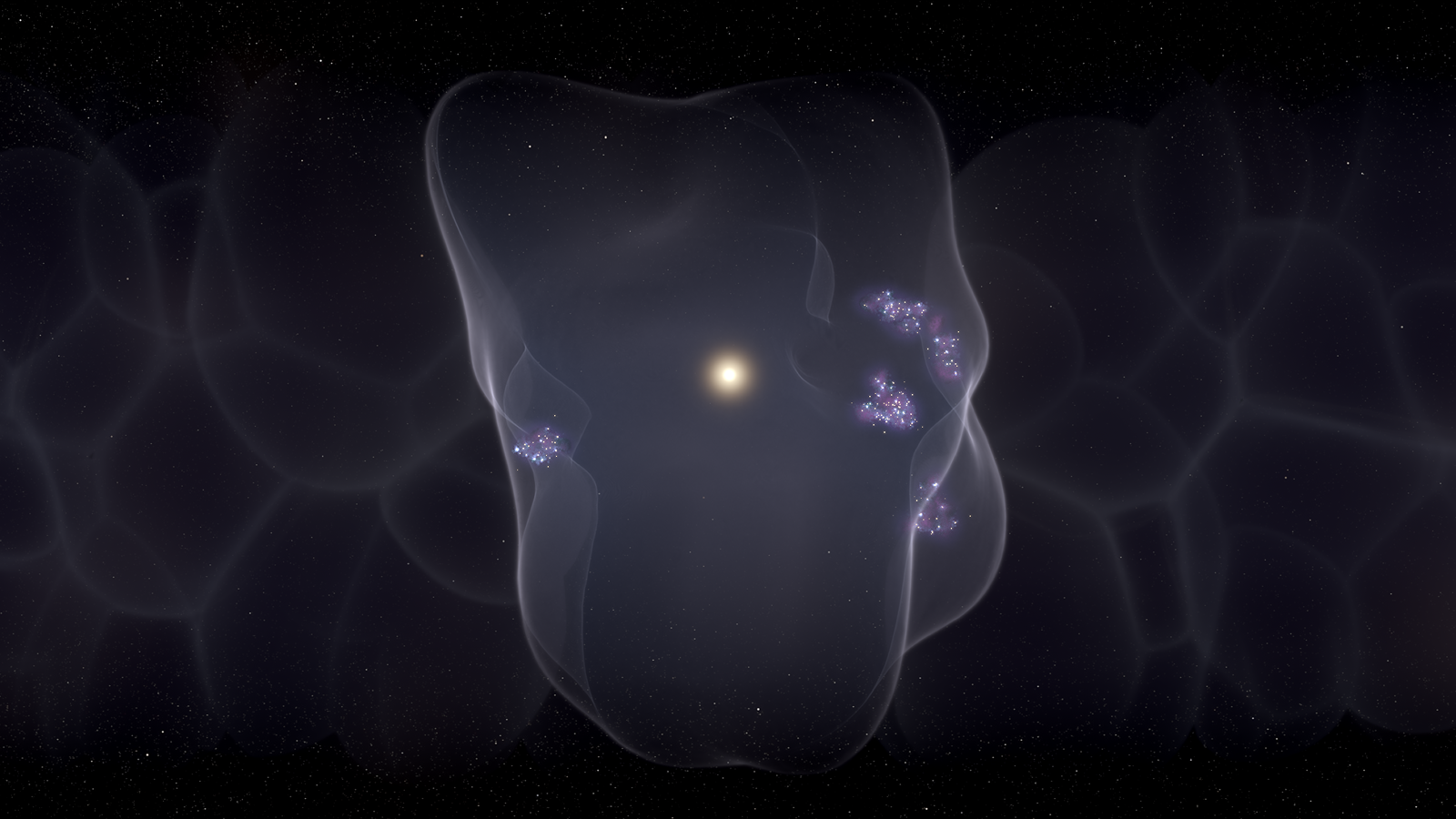Evil-Thwarting 'Rattles' Found in Prehistoric Infant's Grave

Tiny figurines that may have been used as rattling toys or charms to ward off evil spirits were discovered in the grave of an infant dating back 4,500 years, archaeologists say.
The burial was discovered on the northwest shore of Lake Itkul in the Minusinsk basinin Russia. The infant's remains, which were found in what appears to be a birchbark cradle, suggest he or she was less than a year old at death. On the infant's chest, archaeologists found "eight miniature horn figurines representing humanlike characters and heads of birds, elk, boar and a carnivore,"wrote archaeologists Andrey Polyakov and Yury Esin, in an article published recently in the journal Archaeology, Ethnology & Anthropology of Eurasia.
The intricately carved figurines were likely made from deer antlers and have traces of red paint on them. "Some of [the figurines] have internal cavities and, upon coming in contact with each other, could produce noisy sounds like modern rattles," wrote Polyakov, of the Institute for the History of Material Culture in Saint Petersburg, Russia, and Esin, of the Khakassian Research Institute of Language, Literature and History. [Images: Abandoned Baby's Bones in Ancient Tuscany]
The figurines would have been attached in some way to the cradle, the researchers say. They could have functioned as toys and may also have protected the infant from evil powers. "Various apotropaic charms are a necessary element of cradle decoration in the traditional cultures," Polyakov and Esin wrote.
Archaeologists cannot rule out the possibility that the figurines have "no relation to the cradle, and [were] placed into the burial to ensure successful transition of the deceased child to the next world," they wrote.
Headgear
The infant also had some interesting headgear. The infant's head was turned toward the southwest, and, on the skull, archaeologists found 11 small copper plaques, 10 of which were made from a thin oval copper plate no more than a half inch (1.5 centimeters) across, the archaeologists said.
Get the world’s most fascinating discoveries delivered straight to your inbox.
Each of the plaques had two fastening holes, where thin leather laces would've been threaded through to attach them to one another. The cap could then be placed on the infant's head. Remains of those laces were also found in the burial.
One of the plaques, located at the top of the infant's headgear, was made of two metallic cones that would have been sewn together. "Probably these were adornments of the child's cap," Polyakov and Esin wrote. They note that an earring was also found to the left of the infant's skull.
The infant's people
The infant was buried along with several other people in a burial mound called a kurgan. The people buried in the mound were part of what modern-day archaeologists call the Okunev culture.
Although writing had not yet spread to this part of the world, "the Okunev people had mastered processing of copper and bronze manufacture from which they cast blades, daggers, axes and spear-heads, fishing hooks and other tools and ornaments," Esin told Live Science in an email. In addition to metal, these people continued to use tools made of stone and bone, Esin added.
"People who were buried in this kurgan were early herders. We have images of domesticated animals (especially bulls), carts and wagons in Okunev rock art," Esin wrote.
The Okunev people may have venerated anthropomorphic [part-human and part-animal] deities. "In my view the anthropomorphic images in Okunev art could represent deities. In this period here in Minusinsk basin people have quite complicated mythology and rituals," Esin told Live Science.
The work was supported by the Russian Foundation for the Humanities.
Editor's Note: This article was updated to clarify the institution for one of the archaeologists.
Follow Live Science @livescience, Facebook & Google+. Original article on Live Science.

Owen Jarus is a regular contributor to Live Science who writes about archaeology and humans' past. He has also written for The Independent (UK), The Canadian Press (CP) and The Associated Press (AP), among others. Owen has a bachelor of arts degree from the University of Toronto and a journalism degree from Ryerson University.




